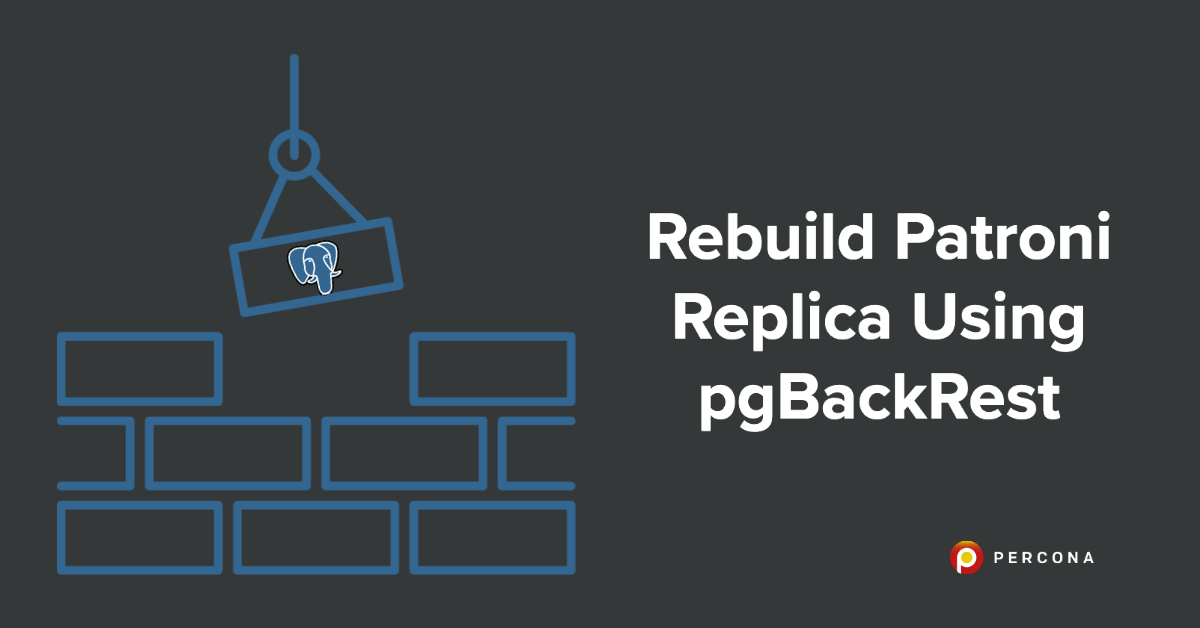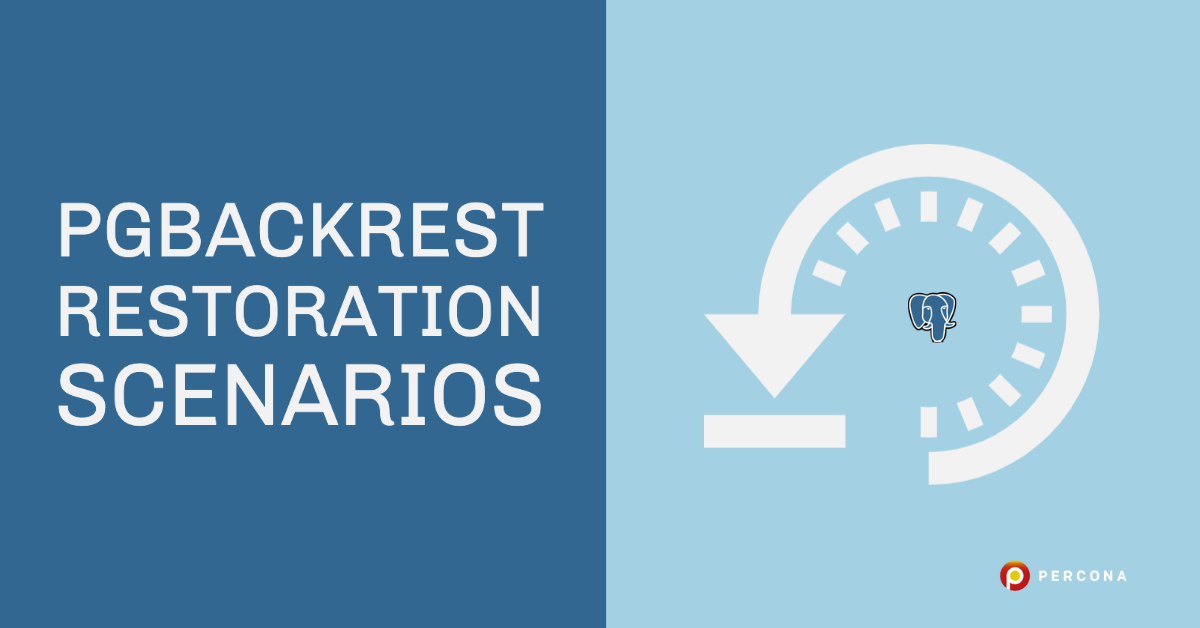
by Vadim Tkachenko | Mar 13, 2023 | Insight for DBAs, PostgreSQL
Announcement I will be speaking at Percona Live 2023 about serverless PostgreSQL. Join us at this event if you are interested! Introduction Recently, Percona introduced Percona Builds for Neon (Introducing Percona Builds for Serverless PostgreSQL), which makes it easy...

by Naveed Shaikh | Feb 20, 2023 | Cloud, Insight for DBAs, PostgreSQL
Recently, one of our customers approached us with a unique challenge: they needed to migrate their entire PostgreSQL cluster from DigitalOcean’s Database as a Service (DBaaS) to a DigitalOcean Droplet. The reason for their migration from DBaaS to Droplets was to...

by Jan Wieremjewicz | Feb 14, 2023 | Insight for DBAs, PostgreSQL
The final PostgreSQL 10 release was published on November 10, 2022, according to the PostgreSQL versioning policy page. Please remember that the final PostgreSQL 11 release is planned for November 9, 2023. Following Percona’s Release Lifecycle policies, we follow and...

by David Stokes | Feb 13, 2023 | Insight for DBAs, PostgreSQL
Yes, MySQL DBAs can learn PostgreSQL! This series is for those who know MySQL and want to expand their knowledge, see how another database works, or are looking to expand their career horizons. In this episode we will look at transactions. Yes, MySQL with InnoDB does...

by Ibrar Ahmed | Feb 1, 2023 | Insight for DBAs, PostgreSQL
PostgreSQL is a fantastic database, but if you’re storing images, video, audio files, or other large data objects, you need to “toast” them to get optimal performance. This post will look at using The Oversized-Attribute Storage Technique (TOAST) to improve...

by Peter Zaitsev | Jan 30, 2023 | Insight for DBAs, PostgreSQL, Security
As Ibrar Ahmed noted in his blog post on Transparent Database Encryption (TDE). PostgreSQL is a surprising outlier when it comes to offering Transparent Database Encryption. Instead, it seems PostgreSQL Developers are of the opinion that encryption is a storage-level...

by Jobin Augustine | Jan 24, 2023 | Insight for DBAs, PostgreSQL
Attempts to compress PostgreSQL WAL at different levels have always been around since the beginning. Some of the built-in features (wal_compression) have been there since 2016, and almost all backup tools do the WAL compression before taking it to the backup...

by Ninad Shah | Jan 17, 2023 | Insight for DBAs, PostgreSQL
This blog is in continuation of my previous blog on the basic understanding of corruption with the subject line The Ultimate Guide to Database Corruption: Part 1 – An Overview. If you have not already gone through it, I encourage you to read it to understand...

by Jobin Augustine | Jan 4, 2023 | Insight for DBAs, PostgreSQL
Last time I blogged about the New WAL Archive Module/Library feature available in PostgreSQL 15, which is quite transformative in how WALs are archived today in PostgreSQL. PostgreSQL 15 has many more improvements related to WAL archiving, which is worth discussing....

by David Gonzalez | Dec 29, 2022 | Insight for DBAs, PostgreSQL
While working as a DBA, we perform many regular tasks, and one of them is upgrading our database systems. There are some techniques to perform a PostgreSQL database upgrade, such as data dump and import, logical replication, or in-site upgrade using pg_upgrade. The...

by Robert Bernier | Dec 23, 2022 | Insight for DBAs, Insight for Developers, PostgreSQL
One of the routine operations when administering PostgreSQL is periodic updates to the database system’s architecture. PostgreSQL does a good job of allowing one to update a schema, add types, functions, triggers, or alter a table by adding and removing columns...

by Sonia Valeja | Dec 23, 2022 | Insight for DBAs, Open Source, PostgreSQL
Patroni is one of the most used high availability (HA) solutions with the PostgreSQL database. It uses a Distributed Configuration Store (DCS) to keep the configuration in a centralized location available for all nodes making it an easy-to-use and reliable HA solution...

by Sagar Jadhav | Dec 22, 2022 | Insight for DBAs, PostgreSQL
PostgreSQL manages database access permissions using the concept of roles. A role can be either a database user or a group of database users, depending on how the role is set up. Roles can own the database objects and assign privileges on those objects to other roles...

by Abdul Sayeed | Dec 14, 2022 | Insight for DBAs, PostgreSQL
In one of our previous posts Detailed Logging for Enterprise-Grade PostgreSQL, we discussed parameters to enable detailed logging and use Log Analyzer – pgBadger. In this blog post, we will configure a Microsoft Azure provisioned PostgreSQL Flexi Server to populate...

by Robert Bernier | Dec 14, 2022 | Insight for DBAs, PostgreSQL
Prologue This blog is the result of my investigation into column-wise tables. Hopefully, you will find it useful in your deliberations. When I started writing it was meant to be a “Good News” blurb. I was pretty optimistic that I’d truly have impressive numbers to...

by David Stokes | Dec 7, 2022 | Open Source, PostgreSQL
There is an interesting project by the folks at PostgresPro that is translating Egor Rogov’s PostgreSQL 14 Internals into English. This an ongoing project being released as they make progress in providing a great resource to the PostgreSQL Community. Parts I...

by Jobin Augustine | Dec 2, 2022 | Insight for DBAs, PostgreSQL
PostgreSQL traditionally uses shell commands to achieve continuous WAL archiving, which is essential for backups and stable standby replication. In the past, we blogged about the inefficiency in that design and how some of the backup tools like PgBackRest solve that...

by Bhargav Kamineni | Nov 15, 2022 | Insight for DBAs, PostgreSQL
In one of our previous posts—pgBackRest: A Great Backup Solution and a Wonderful Year of Growth—we discussed the installation of pgBackRest and the backup, quick restore command. It would be ideal to have a restoration activity scheduled as per business needs so that...

by Jobin Augustine | Nov 9, 2022 | Insight for DBAs, PostgreSQL
In the first part of the article, we discussed how to achieve minimum security by adding a username and password to Patroni REST API and switching from HTTP traffic to HTTPS. In this article, we will be covering how to secure REST APIs using certificate...



















